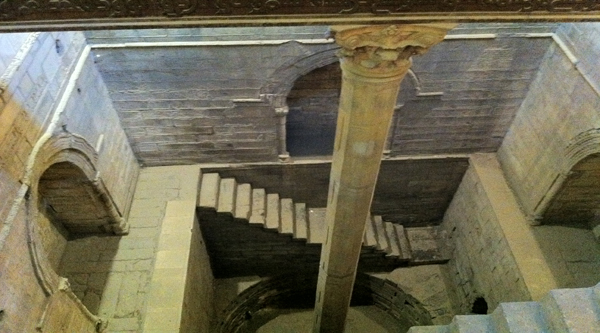Nilometer of Roda island: description, facts, history, photo | Tour to Nilometer in Cairo
4.8 / 5 61 ReviewsAddress
Location: East end of Roda island
Accessibility
Not wheelchair friendly
The Nilometer (in Arabic miqyas or measure) ar Rawda island is the oldest structure in Egypt built after the Arab conquest that survives in its original form. Its all important function was to measure the annual Nile flood in august-September, to regulate distribution of water and the levy of taxes paid as tribute by Egypt to the Caliph.
The Umayyads had built a Nilometer of the simple type used earlier in Egypt, a graduated wall in the Nile. The Nilometer we see today was built in 861 by order of the Abbasid Caliph al-Mutawakki. It is a rather sophisticated instrument, based on the principal of communicating vessels.
The Nilometer consists of a pit on the southern tip of Rawda island, facing al-Fustat to the east, communicating with the Nile through tunnels dug on three levels on its eastern side. The pit itself is circular at the bottom and rectangular at the top and is lined with stone. On its walls are four recesses with pointed arches, flanked by colonnettes showing two types of voussoir decorations. In the middle of the pit is a marble column squeezed between a millstone at the bottom of the pit and wooden beam spanning the Nilometer at the top. The column, which has a Corinthian capital, is graded and divided into 19 cubits (a cubit is slightly more than half a meter).
The walls of the Nilometer have carved inscriptions in plain Kufic, the earliest surviving example of architectural epigraphy in Egypt. They are Quranic texts referring to water, vegetation and prosperity and thus have a talismanic meaning. A historic inscription referring to the founding of the Nilometer by al-Mutawakkil has been removed. Most probably it was done by Ibn Tulun, who restored the Nilometer in 872-73, removing the name as part of his campaign to assert his independence from the Caliphate. The inscriptions were originally on a background of blue; they were themselves left in the natural stone colour. The wooden painted conical dome covering the Nilometer is part of a modern restoration by king Frouk.
What Nilometer announced was vital to rules as well as to the whole population of Egypt. An ideal flood filled the Nilometer up to the 16th mark; nineteen cubits meant flood catastrophe; and less than 16 cubits spelt drought and famine.
